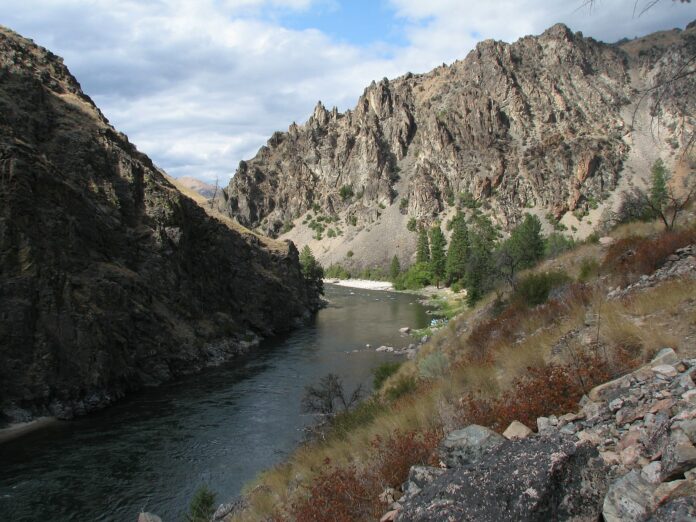BY HANNES THUM
On a recent river trip, I found myself wondering about an odd question. Something along the lines of this: what is the river like when there’s no people around?
The river in question was the Middle Fork of the Salmon, which is a place chock full of dichotomies and contradictions.
On one hand, it’s an incredibly well-protected place within the largest wilderness area in the continental United States. On the other hand, some ten thousand people travel along the river each summer, with all of the associated impacts.
In one sense, it’s a river — a skinny blue line on a map. In another sense, the river itself is such a small part of the place that the river can shrink in importance compared to everything else: the canyon and the rocks; the ponderosa pines and the fish (my goodness, the fish are an entirely separate story!); the bighorn sheep and the wildflowers and the hydrothermal activity and the long history of people living within the canyon; wind, snow, and fire. We rarely are talking about just the water.
It’s a place known for being “untrammeled by man,” yet it can be hard to find a quiet place along its banks during the summer.
So I get to wondering. How do we separate what is truly the Middle Fork from what we, intentionally or not, place on to the Middle Fork? What would the river be without us?
I often reflect on how hard the processes of geology can be to visualize, and I think it’s mostly because the time scales of geology don’t line up well with our human lifetimes and senses of the passing of time — carving a river canyon inch by inch over some 2 million years is not a concept that our hominid brains have evolved to process all that well.
I spent a lot of time on the trip looking at these enormous boulders, many bigger than my car and some not that much smaller than a house, that littered the slopes below cliffs and that regularly studded the river itself.
What would it be like to witness one of these monsters actually peel off of the crags above and tumble down into the river? Nobody I know has seen such a thing happen, but clearly it does happen. But, when? If not while I am floating down in my raft, then when? Maybe in the winter, when less people are around. Maybe on some time scale that I can’t really picture. A life cycle of rock layers forming and uplifting and weathering and cracking and finally falling back down with gravity, only to be slowly washed downstream as silts and sands — something beyond my capacity to understand, perhaps.
What else are we missing? How long would one have to spend there to actually feel the pulse of the place? To anticipate and witness a rock fall, a remote wildland fire start and blossom, an avalanche roar down, the movement of animals?
How much of a lifetime, or how many lifetimes, might one have to be rooted in a place to truly understand it?
Hannes Thum is a Wood River Valley native and has spent most of his life exploring what our local ecosystems have to offer. He currently teaches science at Sun Valley Community School.



